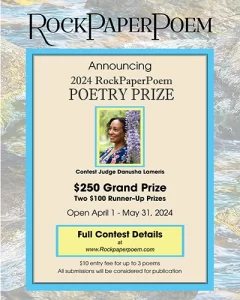Image – Summer 2014
There’s much to be grateful for in this issue of Image. Always intellectual, visual, and spiritually beautiful, now in its twenty-fifth year, Image has a well-deserved reputation for hopeful, but realistic, attention to the intersection of “the larger questions of existence. . . [and] what the poet Albert Goldbarth calls the ‘greasy doorknobs and salty tearducts’ of our everyday lives.” Image is more than a journal—it’s also a set of programs to further the cause of such attention. The theme for this silver anniversary is “Making It New.” This issue fulfills this mission with grace; gratitude, as a response, is entirely appropriate. There’s much to be grateful for in this issue of Image. Always intellectual, visual, and spiritually beautiful, now in its twenty-fifth year, Image has a well-deserved reputation for hopeful, but realistic, attention to the intersection of “the larger questions of existence. . . [and] what the poet Albert Goldbarth calls the ‘greasy doorknobs and salty tearducts’ of our everyday lives.” Image is more than a journal—it’s also a set of programs to further the cause of such attention. The theme for this silver anniversary is “Making It New.” This issue fulfills this mission with grace; gratitude, as a response, is entirely appropriate.
The poetry, beginning with Nicholas Samaras’s moving trio in the voice of John the Revelator on Patmos “Translation Back into Native Tongues,” introduces the motif: “the native tongues to which the soul responds,” the mystery of simile and metaphor on an island of exile. “Spiritual Fallout,” spoken on or from “the cave of apocalypse,” describes the moments of vision recorded in Revelation as intensely sensual, “[b]eyond simile, / beyond anything. . . like this and. . . like nothing else.” And “Island as the End of the World” carries the trope forward into metaphor: “. . . an island’s stony perimeter is much like the end of the world. . . [and] worship is an island / that circles itself and ends / beautifully, amen.” Awareness of language as revelatory in itself lifts the speaker’s soul, and the reader’s.
In the gritty “The Preacher Addresses the Seminarians,” Christian Wiman recounts the imperfections of life, ones that even a pastor experiences. Counseling an upcoming generation of clerics, their shepherd tells it like it is: “I tell you some Sundays even the children’s sermon / —maybe especially this—sharks your gut // like a bit of time some beer-guzzling goat / either drunkenly or mistakenly decides to sample. . . ” But that’s not the end of it—it never is, for Wiman or for Image, and that’s the thing to be thankful for: “that goat. / It was real / It is, as is usually the case, the displacement of agency / that is the lie. . . .” To settle for the lie is the mistake Image will not let readers make. The truth is too diverse and rich, and it is in acknowledging this that goodness flowers. The work of Tania Runyan, Lisa Russ Spaar, Win Bassett, and five other poets reaffirms the power of language to locate truth.
Then there’s the equally powerful visual art. Noah Buchanan and Kim Alexander are the featured artists in this issue, where gorgeous color plates of their paintings are accompanied by exceptional commentary (by Gordon Fuglie and Joe Milazzo). Milazzo’s interview with Alexander focuses, at one point, on an image especially relevant to those who teach in any capacity, Self-Portrait as a Teacher (Plate 1). Lilies, artichokes, and oak leaves colorfully sprout from a vibrant heart—a moving metaphor for the ways diverse students and caring mentors interact with, enliven, and change each other. Spiraling natural shapes, bright colors, and whimsical juxtapositions characterize Alexander’s work, which is acrylic on paper rather than oil on canvas for her own quite conscious artist’s reasons.
Sydney Lea, poet laureate of Vermont, reveals in a “conversation” with Brad Davis, “if I can abandon myself to language, if. . . I can allow the words to be what they want to be, if I can discipline myself to keep my ego and will out of the process, I can thereby make myself available to the literally creative power of the word and the Word.” The skillful review by Isaac Anderson of three nonfiction books (by Richard Rodriguez, Hilton Als, and Jesmyn Ward) concludes that “Our stories find their heft, these writers remind us, at the places where the me and the we intersect.” Both by motivating us to read these works individually and by synthesizing them as “each finally [posing] the same question. . . To whom do we belong and who belongs to us?”, this excellent review yields more than the sum of its parts, as do the essay and the fiction that round out Issue 81 of Image.
In her nonfiction piece “Implicit Tree,” Lynda Sexson muses on the consciousnesses implicit in her front-yard silverleaf maple, ranging in time and space to marvel at its vastness though it’s “not a goddess banished by Deuteronomic reform; it’s just a tree.” Both Nathan Poole’s story “A Map of the Watershed” and Janet Peery’s, “Ideal Marriage” wrestle with the respectively anxious and funny ways humans manage that most intimate relation, family, as microcosm of the larger one with all of earth. As a species, we are more than the sum of our individual parts, but each individual must manage both his or her own individuality with as much grace and artistry as possible if we are to transcend our paltry part. This issue of Image, as always, puts our feet to the fire with writing and art that’s hard to ignore—appropriate, as I have said, to acknowledge with thanks.
[www.imagejournal.org]





